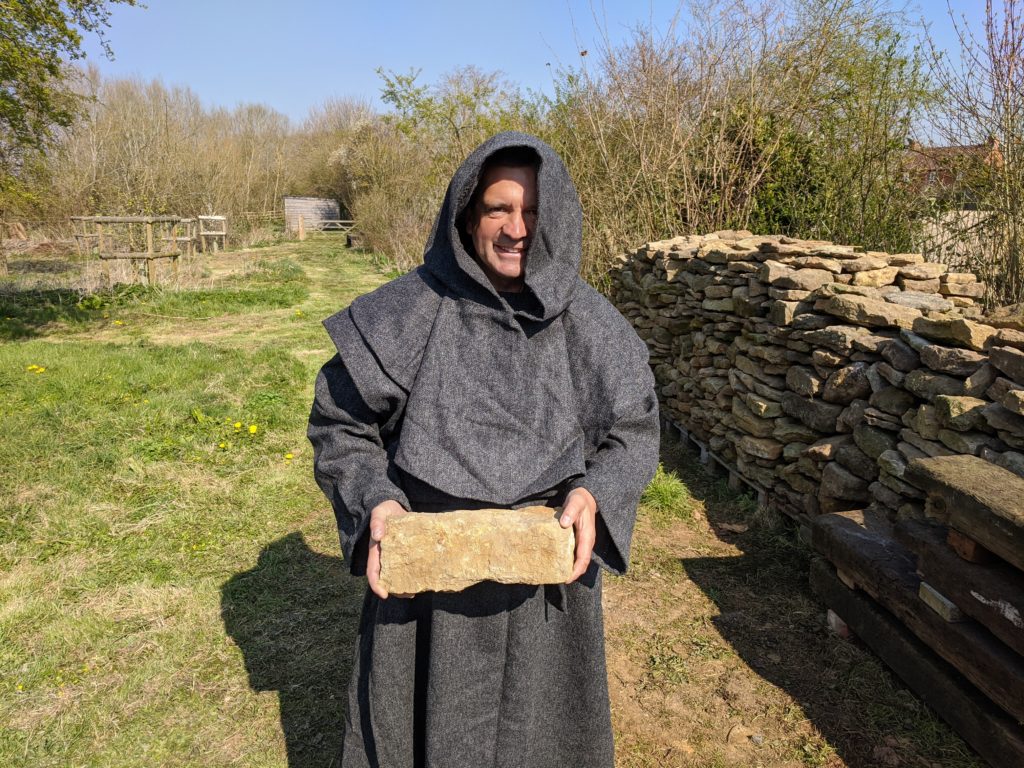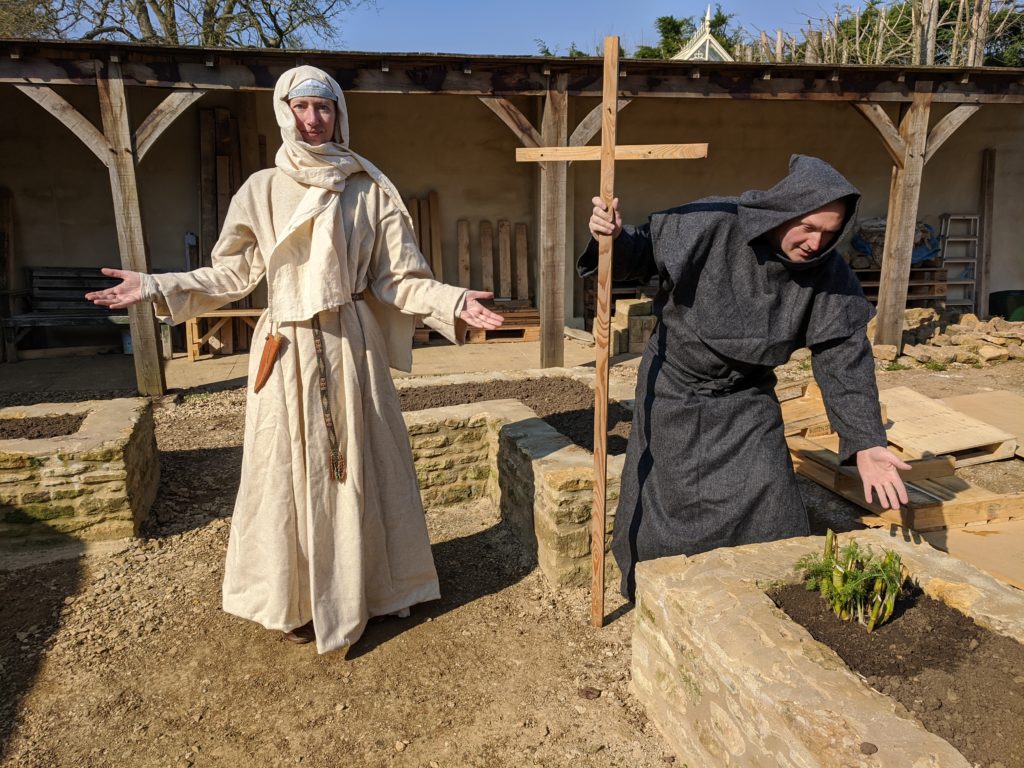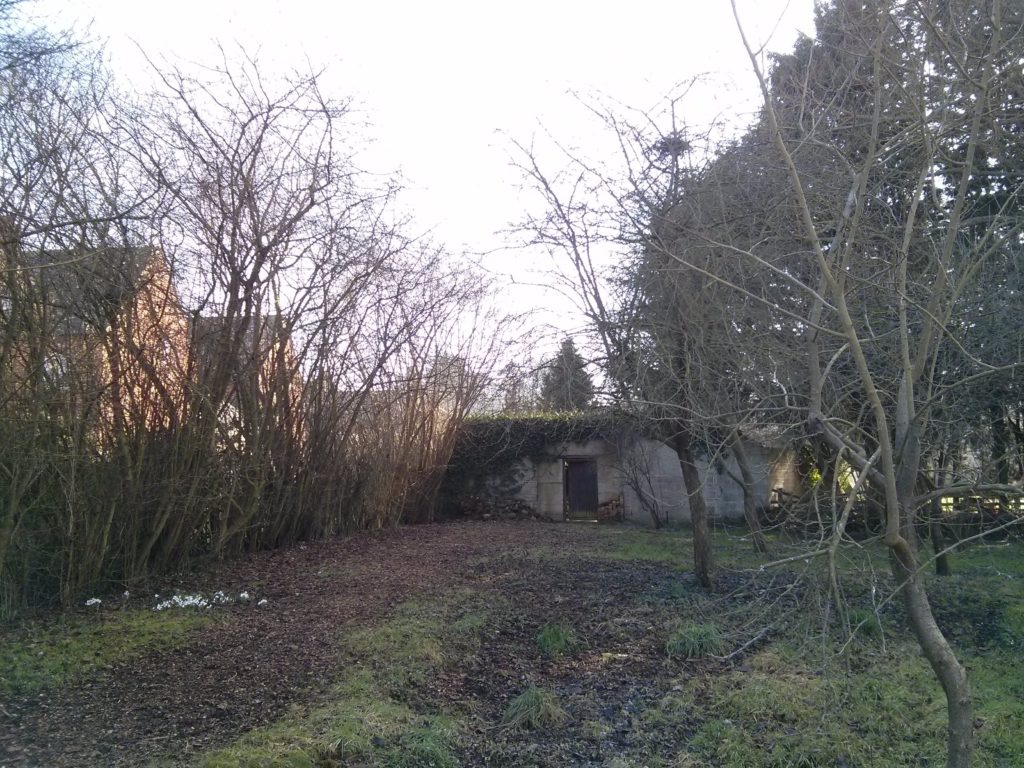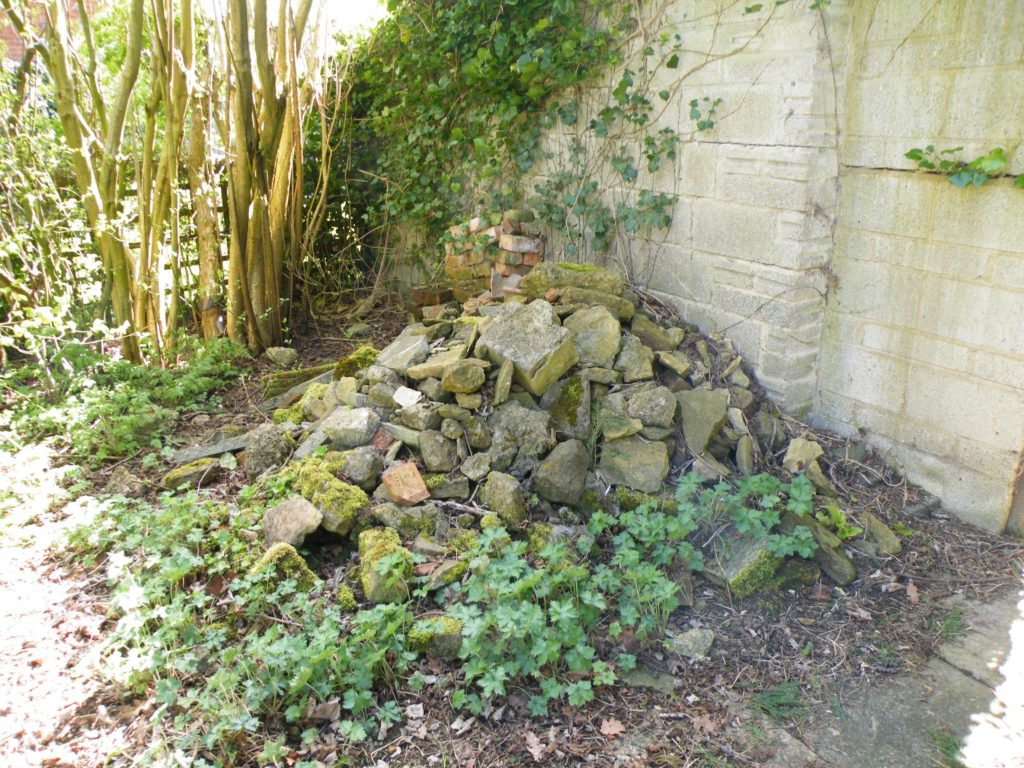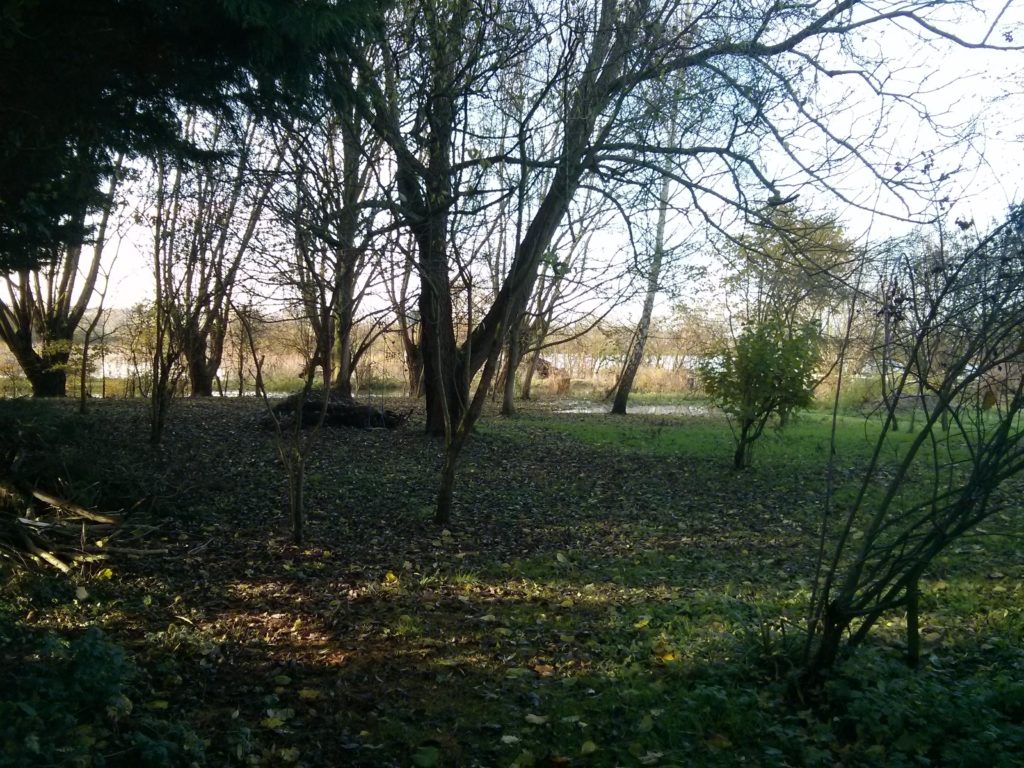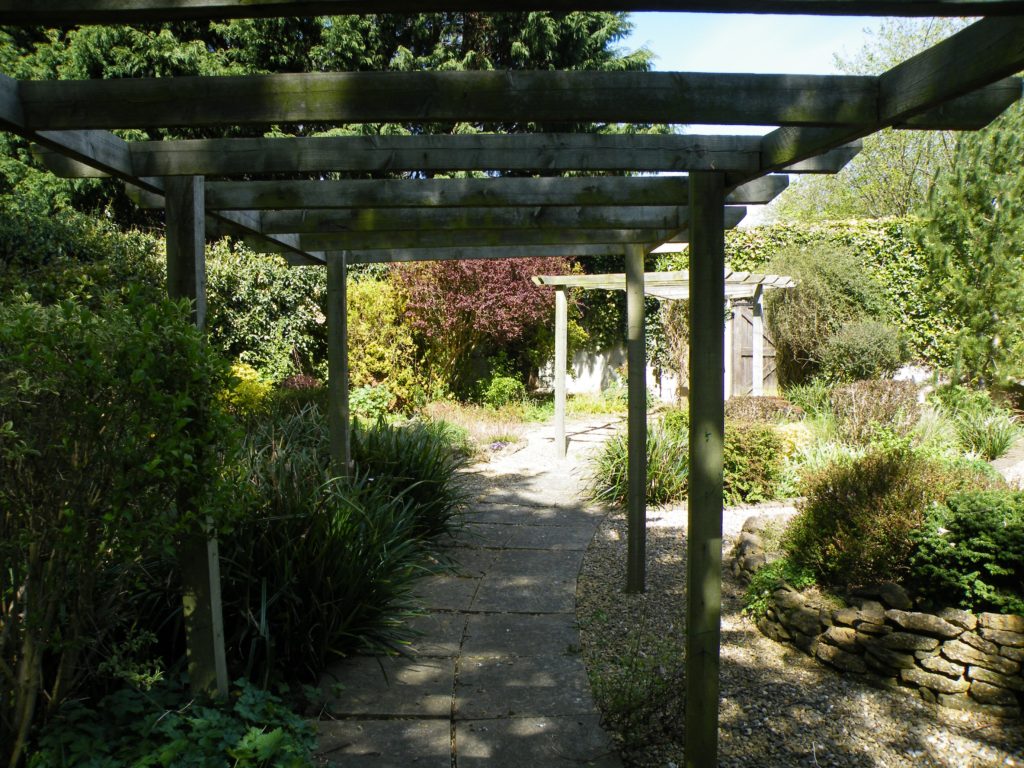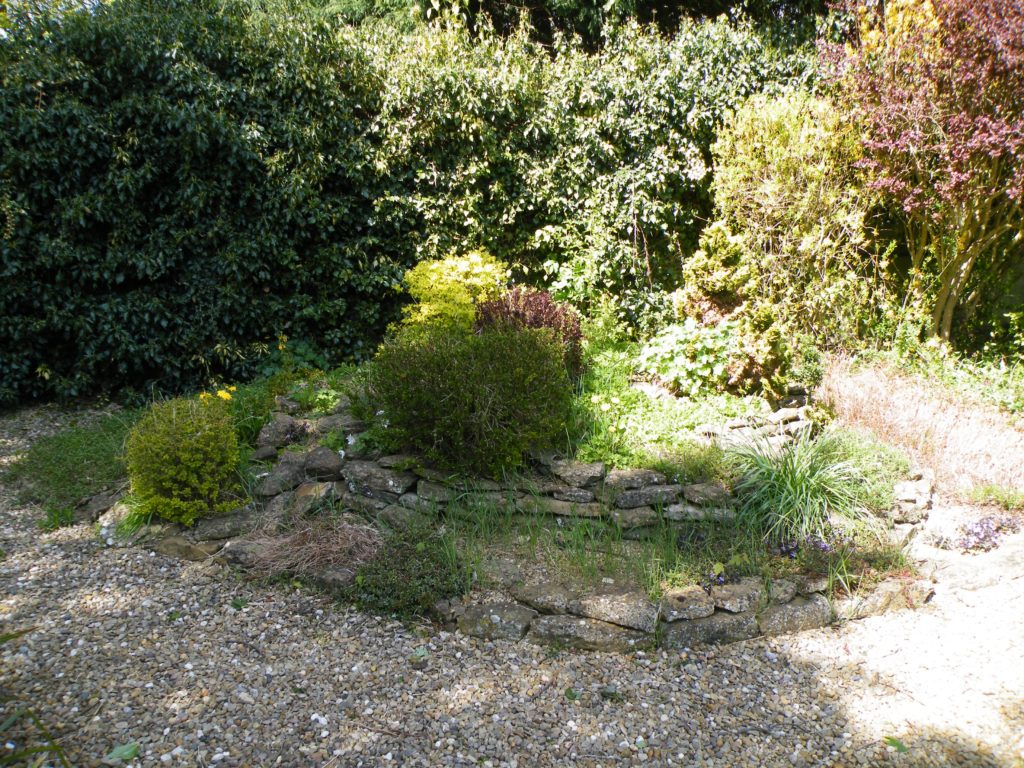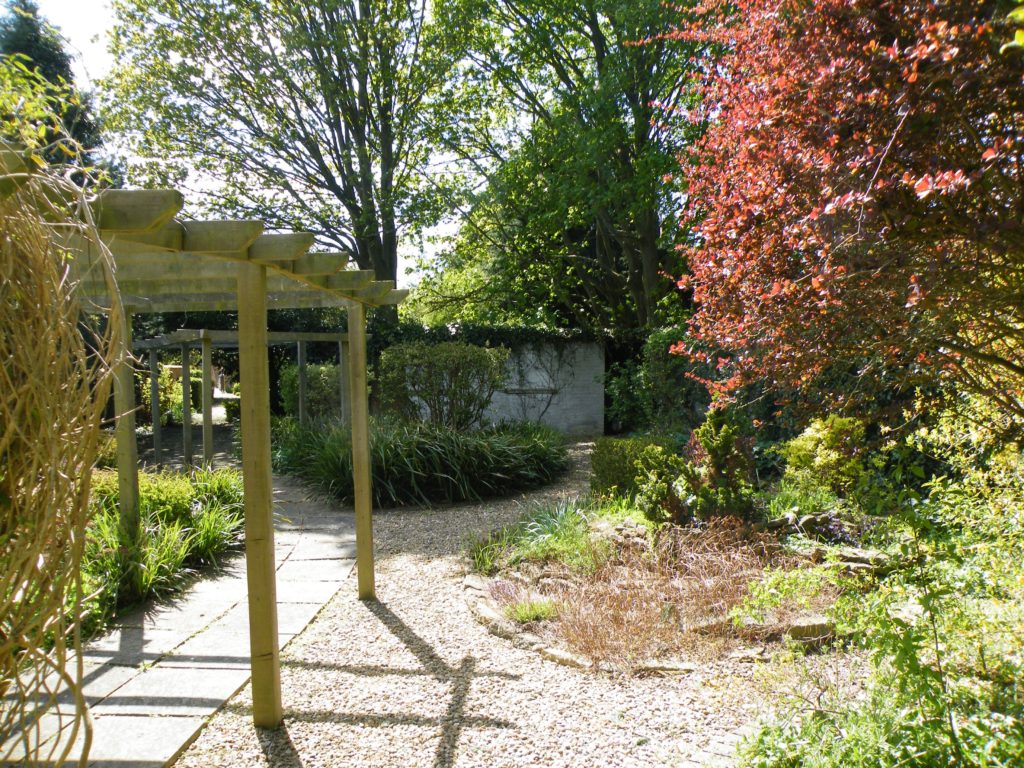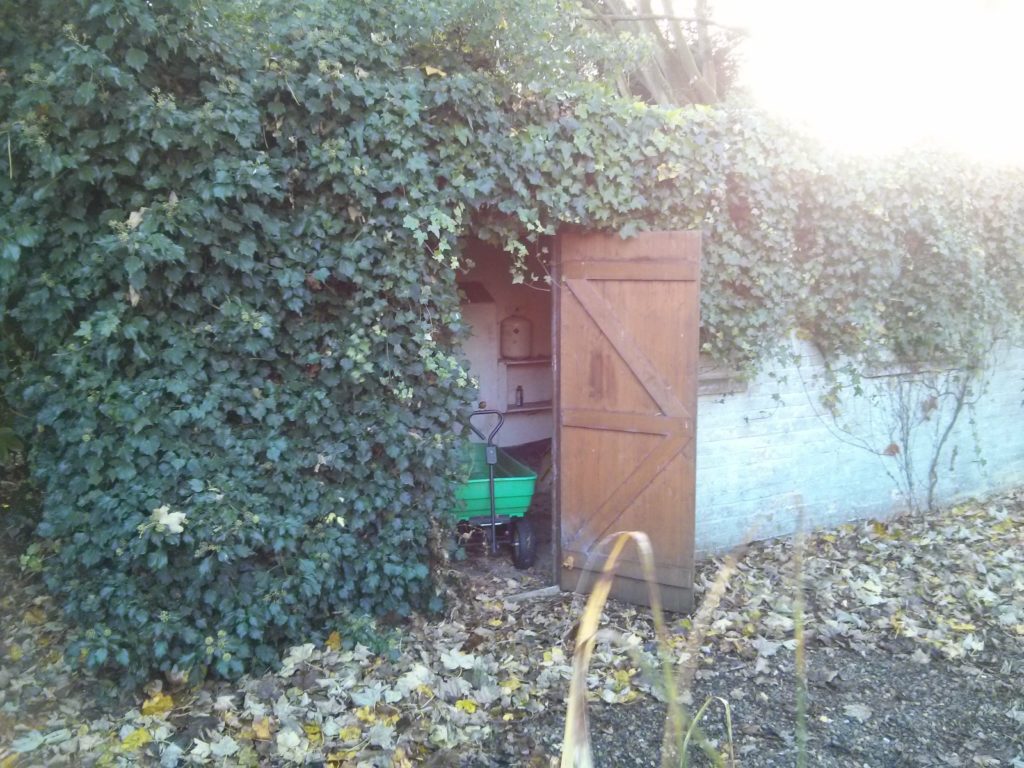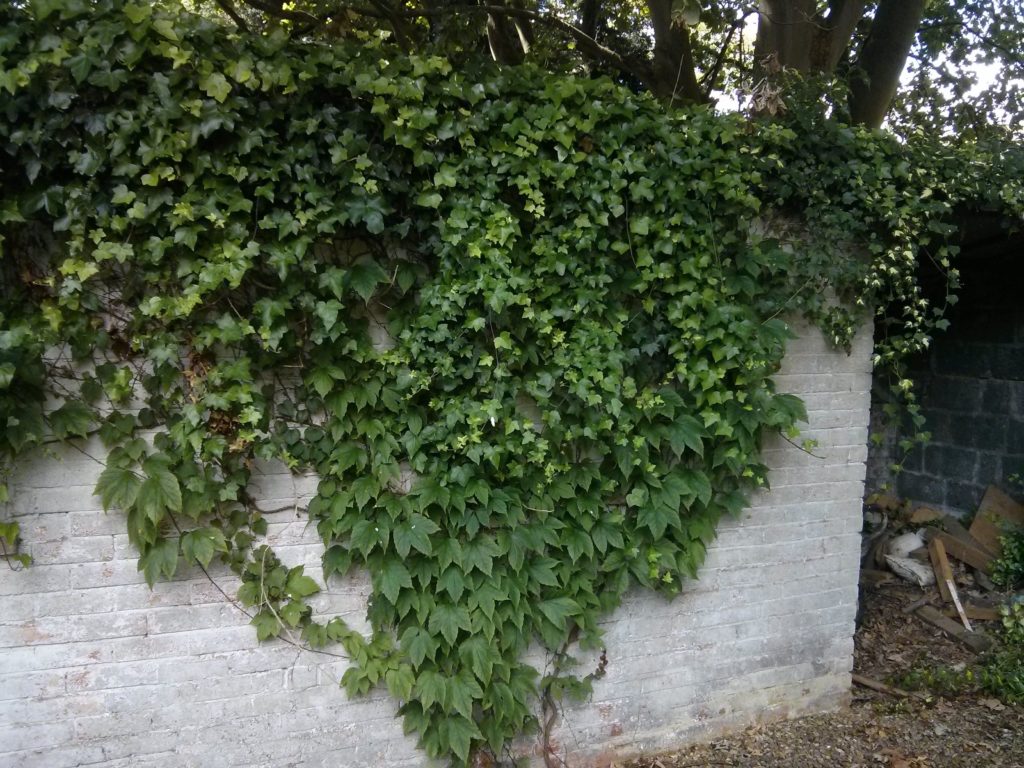Planting of the monastery garden continues with a delivery of plants from the National Herb Centre, and a few which were transplanted from my main garden. On this day the third of April 920 AD, Cyneswithe rejoices and contemplates the life of Saint Mary of Egypt, whose life is celebrated on the first of April. Mary lives a most stimulating life. After years of debauchery she repented of her evil ways and was eventually buried with the aid of a passing lion.
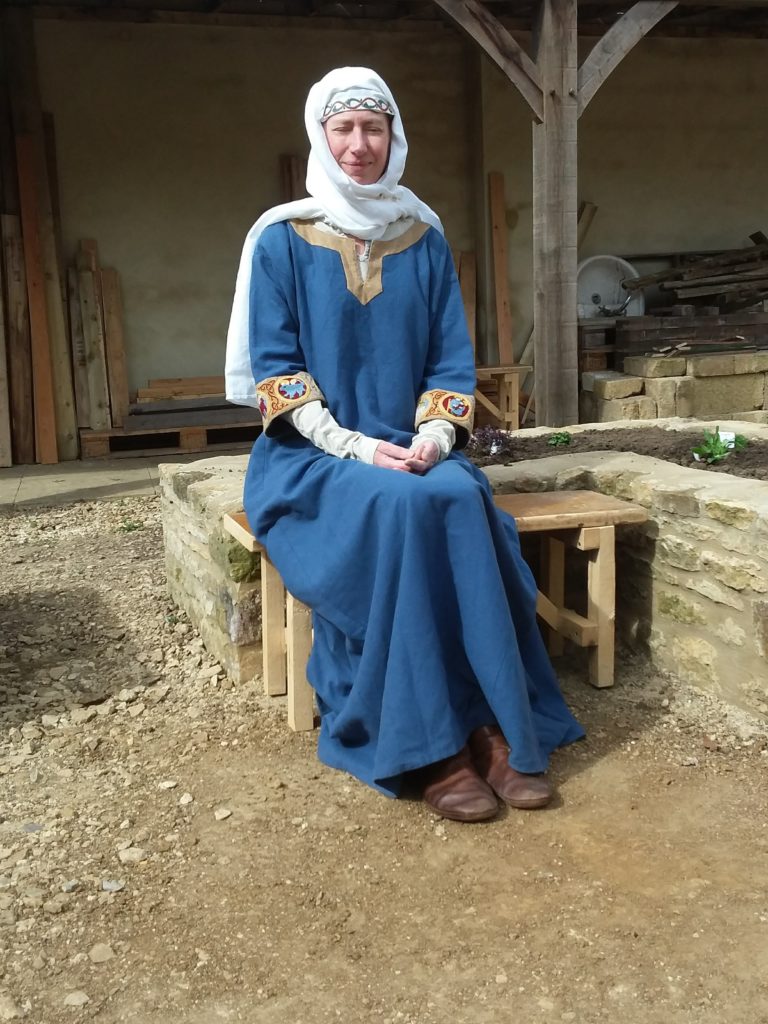
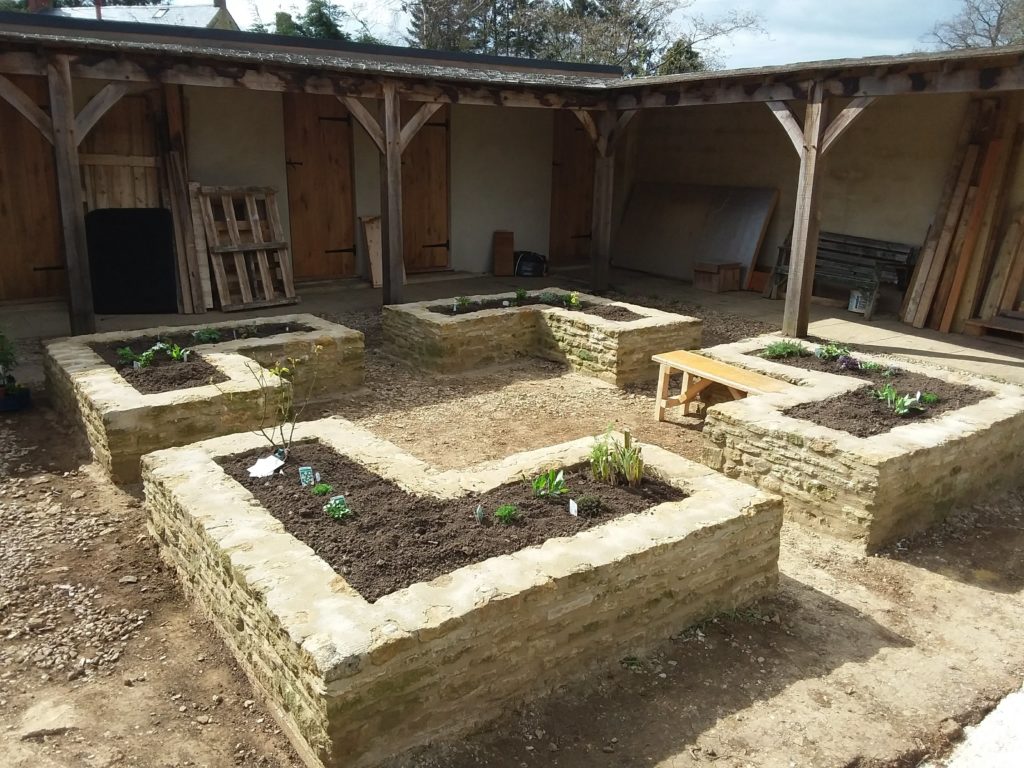
Plants so far
Sun
===
Rosa Gallica Officinalis
Achillea millefolium (yarrow)
Coriander
Anethum graviolens (dill)
Marjoram
Chamaemelum nobile “flore plenum” (Double chamomile)
Thymus serpyllum Russetings (Thyme Russetings)
Cornflower
Tanacetum balsamita (Alecost / costmary)
Mustard red frills
Fennel
Lovage
Peony
Part shade
==========
Petroselinum crispum “french” (parsley)
Fragaria vesca (Alpine strawberry)
Rumex acetosa (broad leaved sorrel)
Viola mixed
Inula helenium (Elecampane) tall, sun or part shade
Viola tricolor (heartsease)
Pot marigold, sun or part shade
Primula vulgaris
Shade
=============
Hellebore black double
Galium odoratum (sweet woodruff)
Marrubium vulgare (white horehound)
Primula veris (cowslip)
I have left gaps for the iris germanica and madonna lilies that are on order. I need some large shade-tolerant plant for the last big empty space – not sure what that would be yet, there are various plants I can’t source just now but I’m not sure which are shady.
I will infill with other plants as the season goes on, but it’s a good start! Rumwaldstow is going green!
